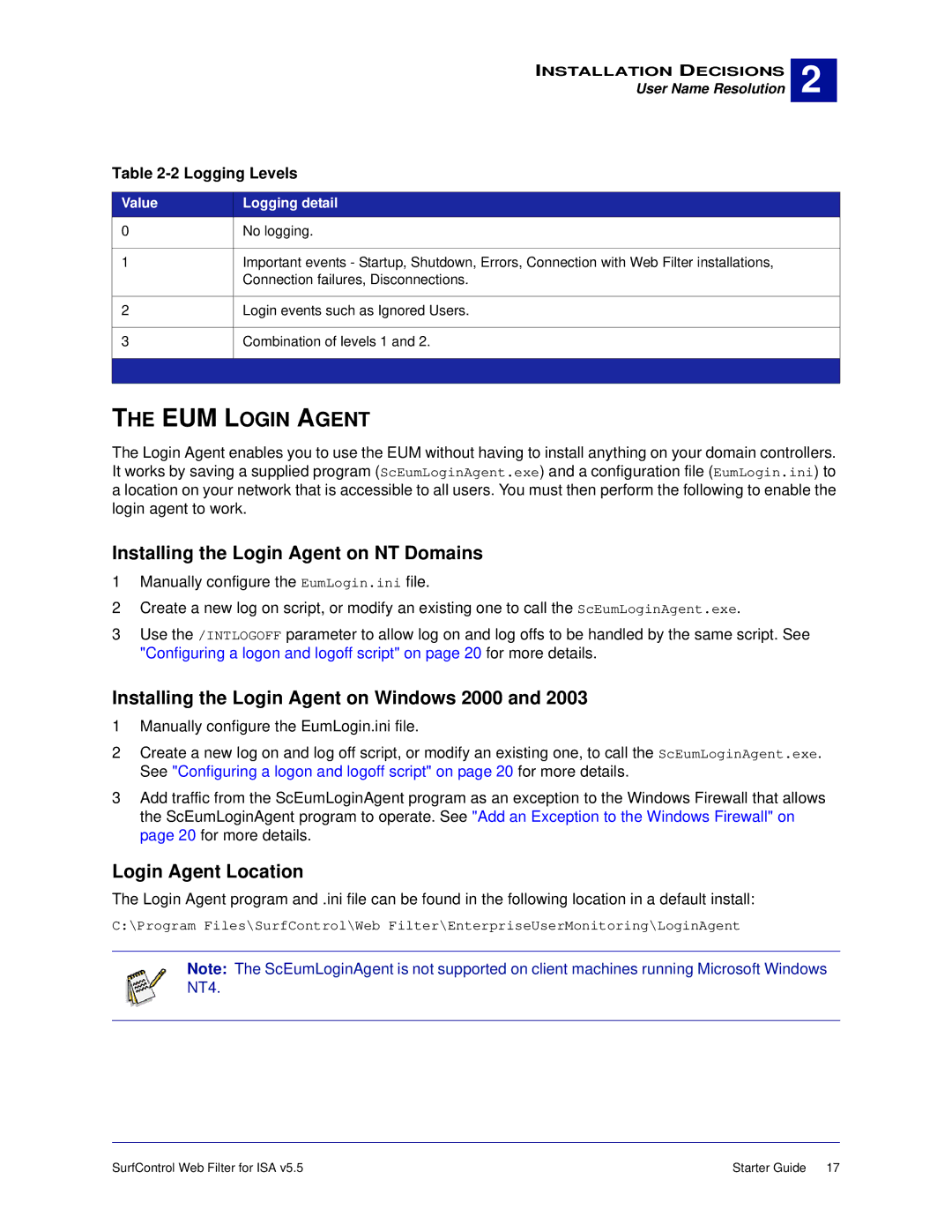
INSTALLATION DECISIONS
User Name Resolution
2 |
Table 2-2 Logging Levels
Value | Logging detail |
0 | No logging. |
|
|
1 | Important events - Startup, Shutdown, Errors, Connection with Web Filter installations, |
| Connection failures, Disconnections. |
|
|
2 | Login events such as Ignored Users. |
|
|
3 | Combination of levels 1 and 2. |
|
|
|
|
THE EUM LOGIN AGENT
The Login Agent enables you to use the EUM without having to install anything on your domain controllers. It works by saving a supplied program (ScEumLoginAgent.exe) and a configuration file (EumLogin.ini) to a location on your network that is accessible to all users. You must then perform the following to enable the login agent to work.
Installing the Login Agent on NT Domains
1Manually configure the EumLogin.ini file.
2Create a new log on script, or modify an existing one to call the ScEumLoginAgent.exe.
3Use the /INTLOGOFF parameter to allow log on and log offs to be handled by the same script. See "Configuring a logon and logoff script" on page 20 for more details.
Installing the Login Agent on Windows 2000 and 2003
1Manually configure the EumLogin.ini file.
2Create a new log on and log off script, or modify an existing one, to call the ScEumLoginAgent.exe. See "Configuring a logon and logoff script" on page 20 for more details.
3Add traffic from the ScEumLoginAgent program as an exception to the Windows Firewall that allows the ScEumLoginAgent program to operate. See "Add an Exception to the Windows Firewall" on page 20 for more details.
Login Agent Location
The Login Agent program and .ini file can be found in the following location in a default install:
C:\Program Files\SurfControl\Web Filter\EnterpriseUserMonitoring\LoginAgent
Note: The ScEumLoginAgent is not supported on client machines running Microsoft Windows NT4.
SurfControl Web Filter for ISA v5.5 | Starter Guide 17 |
